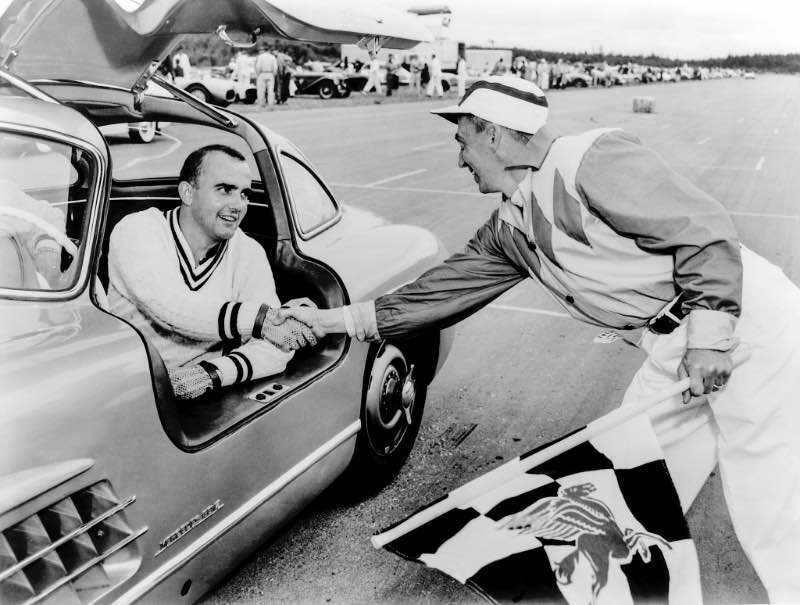Racing driver Paul O’Shea won his second title as the U.S. sports car champion in the 1956 season driving a Mercedes-Benz 300 SL Gullwing. When the season ended on 28 December 1956, he was champion in the category “D Production” and had scored the most points in the National Sports Car Championship of the Sports Car Club of America (SCCA). He went on to defend his title again the following year, this time driving a Mercedes-Benz 300 SLS, the racing version of the 300 SL Roadster.
On 23 January 1957, the New York Times reported that Paul O’Shea was awarded the title of “National Sports Car Champion” for the second year running. This was also a triumph for Mercedes-Benz, because since 1955 the racing driver born in 1928 had been competing with works support in the 300 SL production sports car (W 198). The championship title was informally awarded by the news media. The SCCA only honoured the champions in the individual categories. In 1956, O’Shea won the racing class D of the production vehicles.
No Subscription? You’re missing out
Get immediate ad-free access to all our premium content.
Get Started



